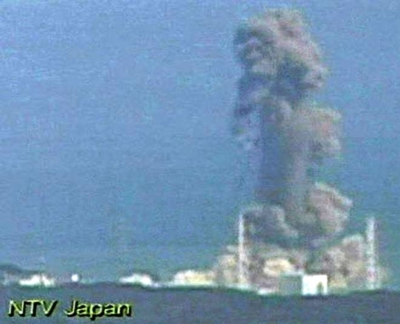
Study that statistic: one hundred per cent safe. You don’t have to be a science journalist to find this a somewhat suspect claim. Are they really saying that under no circumstances could a Russian nuclear reactor ever cause any kind of harm to anyone?
Of course, no technology, especially on the scale of a nuclear reactor, is a 100 per cent safe. And even if it’s just a fraction of a percentage point of error or uncertainty you’re talking about, that’s not something you can comfortably round up. After all, newspapers are constantly full of events so seemingly unlikely that it’s a wonder they happened at all. Freakishly rare things, if the press is anything to go by, happen daily. It’s the same logic that drives so many of us to play the lottery. And indeed it’s a quirky fact made possible by the enormous size of this planet and the billions of people on it that unlikely things will happen all the time.
This is how I expect the residents of Japan felt last spring when journalists reported how small the chances were of them being hit by such a major earthquake, and of it also precipitating a devastating tsunami. It happened, and for the 19,294 people who died in the catastrophe according to the latest police figures, the odds of it happening or not are meaningless. I’m sure that when engineers started constructing the Fukushima Daiichi nuclear plant in 1967, they believed it would be safe. And indeed it was, for the best part of 40 years. But all scientists and engineers know that 100 per cent safety is a guarantee only a politician would give, because no scientist would be so bold, or foolish. It is not yet possible to design out failure completely.
We can’t always know, for example, that a construction worker hasn’t left a weak weld in a structure somewhere – the kind of mistake that led to the capsizing of the Alexander L Kielland oilrig in the North Sea in 1980, killing 123 people. We can’t always be sure that there’s not some small dodgy part in a machine – the kind of error that caused the Space Shuttle Challenger to break apart in 1986 when a tiny O-ring failed, killing all seven crew. And the builders of the Fukushima Daiichi nuclear power reactor couldn’t have known that an enormous tsunami would flood them above the level for which they had designed their defences.
This margin of error is a bitter pill to swallow. It’s a particularly tricky thing for politicians to explain to the public, especially when they’re talking about nuclear reactors. People are particularly unwilling to tolerate any degree of risk when it comes to radiation. So that’s one way of understanding why Putin made the pumped-up claim that he did. We need utter confidence in a technology to accept it ... even if that means glossing over a fraction.
This noble lie, that technology can’t possibly harm us, is universal. But it’s a lie that rests in the fact that the odds are in the favour of the person telling it. Putin knows that within the margins, under the likeliest conditions, none of the nuclear reactors in Russia will ever hurt anyone. The nuclear industry is regulated like no other, and history has shown that, despite the fears and the rare accidents, it’s still an exceptionally safe way of producing electricity compared to other fuels.
To demonstrate just how safe, last year the Next Big Future blog totted up death rates from different energy sources, using data from the World Health Organisation amongst others. They found that for every terawatt hour of electricity produced, the death rate of coal is 161 people globally, 36 for oil and 0.44 for rooftop solar. Nuclear power’s death rate is the lowest of all, at 0.04 per terawatt hour. Whichever way you slice the figures, nuclear is nowhere near as deadly as fossil fuels.
But how do we square this with the fact that accidents happen? Sadly, we can’t. We can only accept that they will continue to happen and do our best to avoid them. We need technology, and that means tolerating risk. Lying in an earthquake zone hasn’t stopped towns and cities being rebuilt in Japan. And catastrophic failures haven’t stopped scientists, engineers, architects and builders from trying again. Similarly, the desperate global need for electricity still outweighs the dangers we face in processing coal, oil, solar energy and nuclear power.
In this world at this time, the most we can hope for is that we make things better the next time. Indeed, these mistakes are what drive human progress. Oilrigs would not be as safe as they are now if no accidents had ever happened. Neither would space shuttles, skyscrapers or aeroplanes (the world’s first commercial jet airliner, the de Havilland Comet, crashed twice because of material failure).
So if one good outcome has come out of the Fukushima disaster, it’s that whatever complacency there may have been about the safety of the world’s nuclear reactors before, it has been wiped out. Even Russia went to the effort of giving its plants a reassuring once-over. This is why Japan’s tragic accident shouldn’t spell the end of nuclear power – the accident itself has made nuclear power even safer for the rest of us.
Angela Saini’s Geek Nation: How Indian Science is Taking Over the World is out now in paperback, published by Hodder & Stoughton

